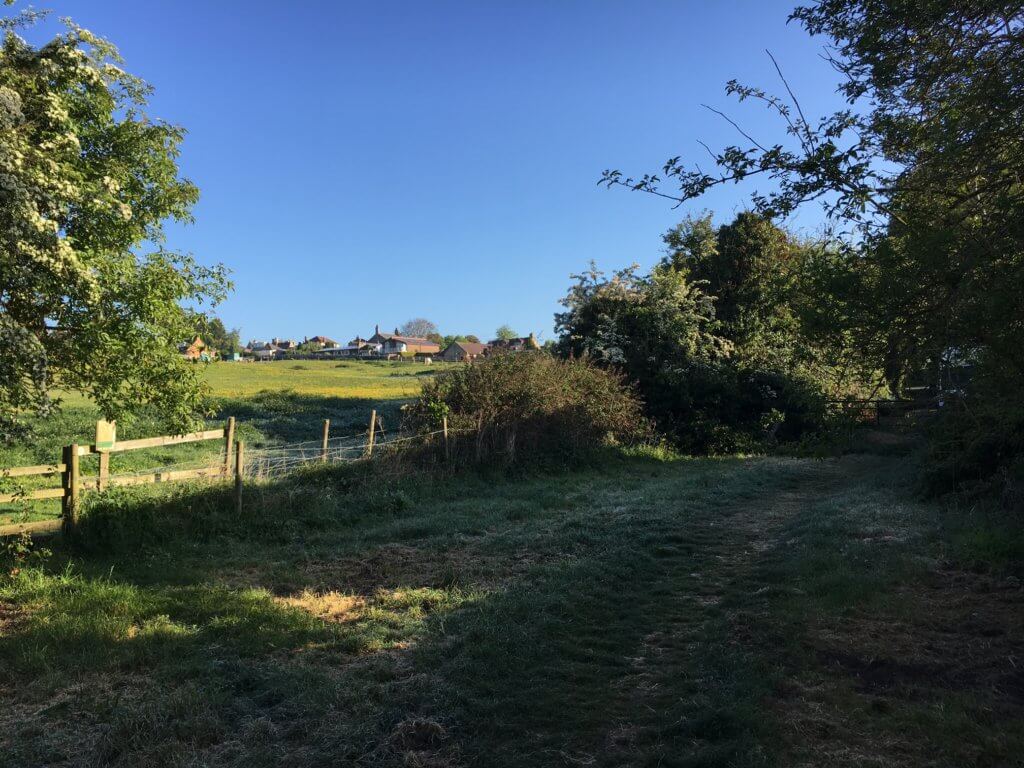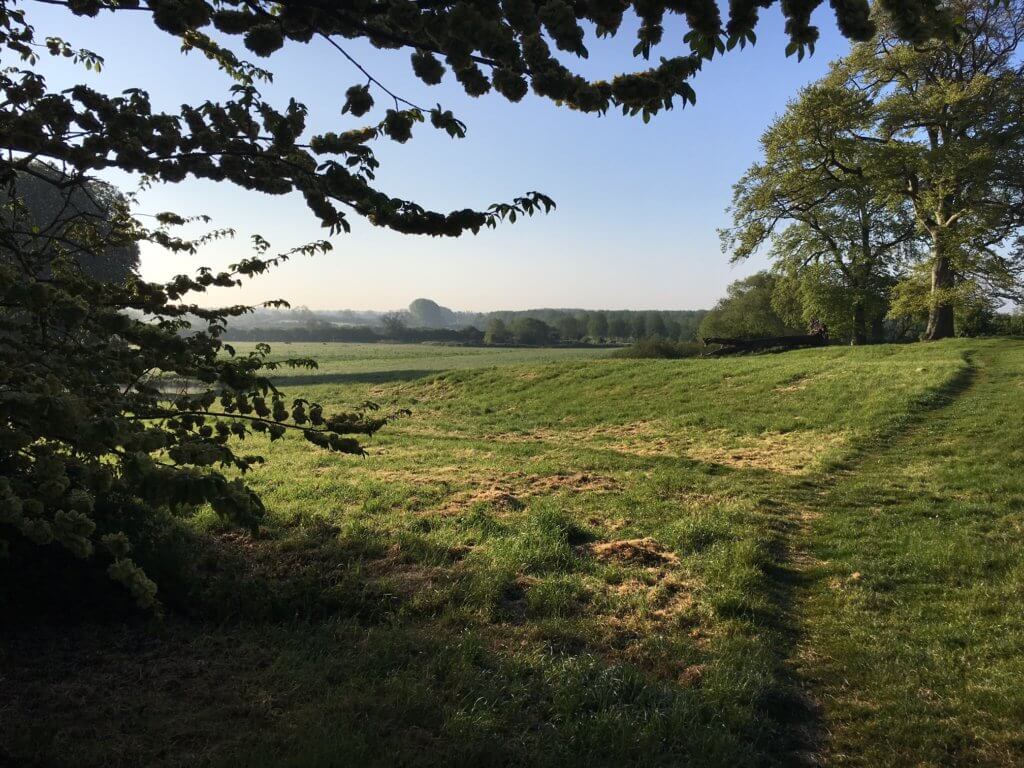
I don’t remember ever having to scrape frost off the car windscreen when heading off to survey a BBS square in May or June but I did on Wednesday when I found the time to carry out the first visit to my second square. Things weren’t looking very good as I drove down the Nene Valley and saw large areas of mist in the valley bottom where I was heading. But when I parked in my usual spot the visibility was perfect although the air was a little nippy but the blue sky promised warmer weather soon.
Visiting this site is a little like visiting a geographically distant relative – I know them quite well but I don’t see them very often and so I usually spot some differences that have occurred over the last 11 months. This visit did bring up some changes.
My walk starts in the village and that’s where, strikingly, the density and species richness of birds is highest. Loads of House Sparrows, Starlings, Jackdaws and Collared Doves with Swifts, Swallows and a smattering of Wrens, Robins, Blackbirds, tits, Dunnocks etc.

As I head off into the countryside I’m walking near the River Nene and the number of birds drops but they are classier species. A pair of Common Terns flew along the river calling and a Chiffchaff was singing from an oak tree. Whitethroats, a few, were singing from the bushes along my path. This is where I sometimes hear a Cuckoo but not today. And it’s where I always have a few singing Sedge Warblers and a Reed Bunting – but not today. And it’s easy to see why – the scruffy field by the river with some long vegetation (almost a reed bed) is scruffy no more, it’s been tidied up, the grass cut, some Christmas trees planted and the scrubbier bits, the bits with the birds in them, cut down. There’s a pile of debris in the corner of the field. That’s the end, I’m pretty sure of Sedge Warblers for this plot and there won’t be many Reed Buntings any more either. That’s a shame but, let me stress, nobody has done anything illegal or even immoral here. Someone owns this land, and within the law they can manage it how they like. But this will have been bad news for birds.
There have been Sedge Warblers and Reed Buntings, a few pairs, recorded on this BBS square for the past 11 years and unless some turn up on my 2nd visit here in a month’s time they are now going to miss a year. We’ll see but I’m not hopeful and I’ll let you know what happens. But, it has to be said, that’s the value of these long-term surveys. My predecessor at this square and I have recorded the birds here for more than a decade and so we can show that this year is different from the rest – and in this case it is pretty obvious why as well. Take that type of data for thousands of BBS squares and you are building up a clear picture of ornithological change. That’s the strength of citizen science programmes like this one.
A bit further on, on section 6, I found another change – an attractive bit of hedge-laying.
There were two other changes too. The first Garden Warbler on the square for 11 years. Hooray!
The second change was a completely new species for the square and a sign of the times. I can remember most of the BTO codes for species: S. is Skylark, B. is Blackbird, WH is Whitethroat and BT is Blue Tit, for example. I always struggle over Greenfinch although it’s a perfectly logical GR and Green Woodpecker (G.) sometimes catches me out. But when you get a new species it is sometimes a bit of guesswork. And that’s how we get to ET which is Little Egret – a new species for this square, a sign of the times and quite different from LG (Little Grebe), LE (Long-eared Owl) and LT (Long-tailed Tit).

I guess that when the BTO codes were drawn up that Long Eared Owls were more common than Little Egrets, hence the owl got the most ‘appropriate’ code. As a former resident of Northants now doing ( local) BBS in Somerset I know ET pretty well ; but I would be stuck on Common Tern ( as CT is Coal Tit).
That E.T. above you has already read this blog and knows that the UK was the first and continues to be the best at CS.
Of course, if you’d cycled, you wouldn’t have had to scrape the frost off the windscreen. And the exercise would have done you lots of good :o) Also, no fossil fuel carbon dioxide…
Hi Mark
I am pretty sure that was the transect I used to count. Are there any lapwings or skylarks in the field leading up to the tumuli?
Chris – ah ha! Yes there are!
I didn’t know it was once yours. I’ll try to look after it for you.
GR always confuses me, too. Had to send a hurried email to our local RSPB warden that I hadn’t seen golden pheasant (GF) and they certainly weren’t singing!